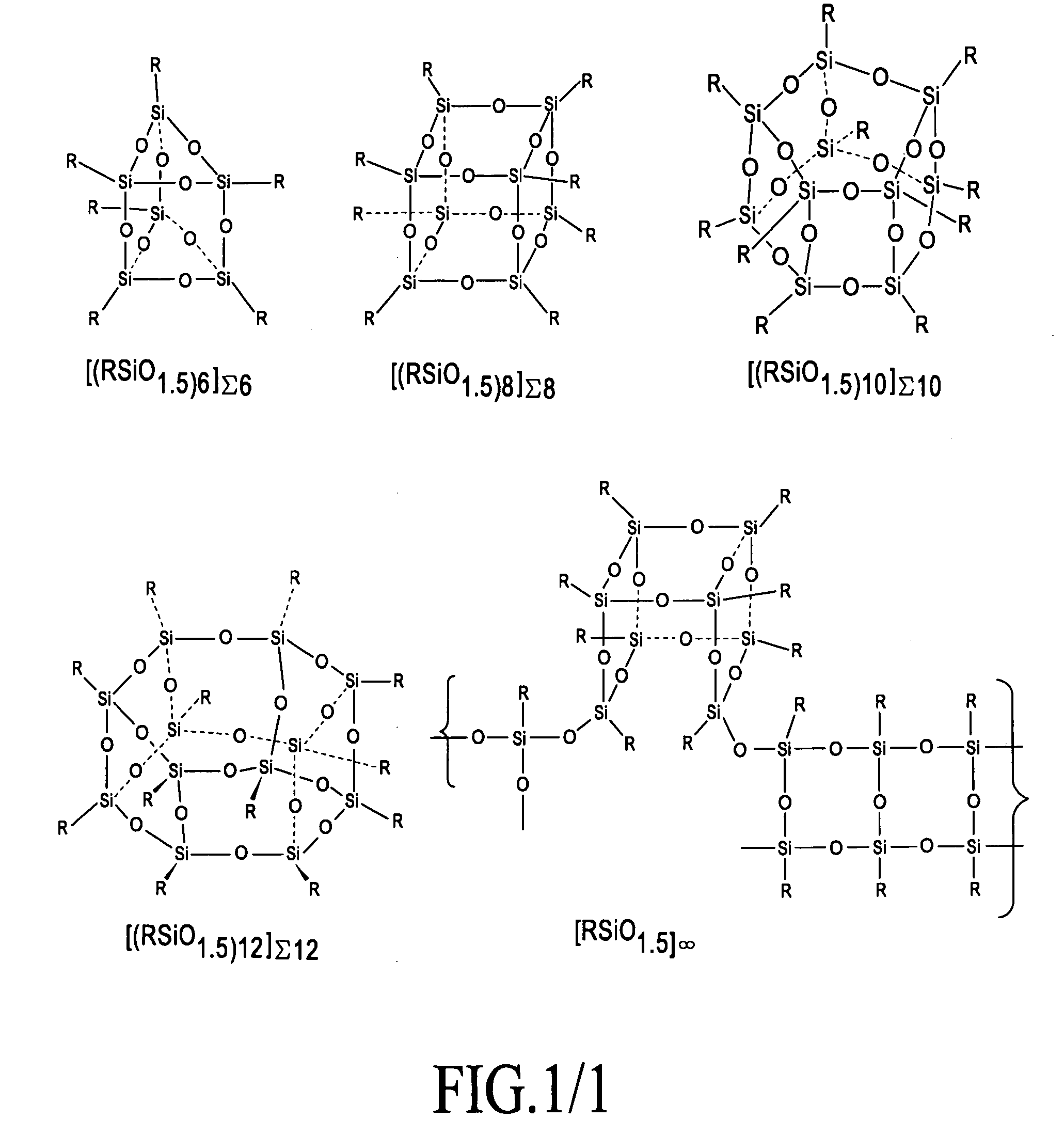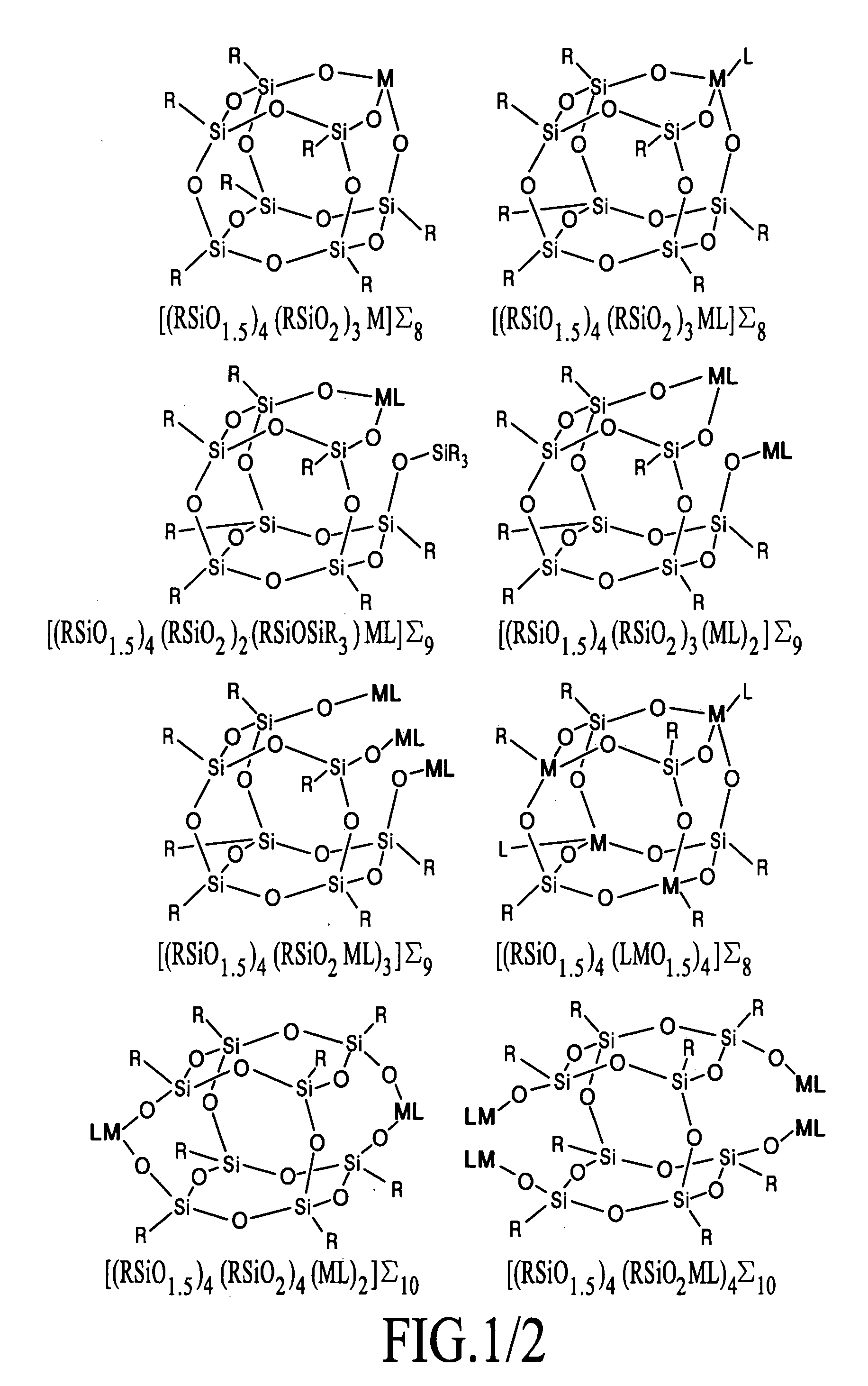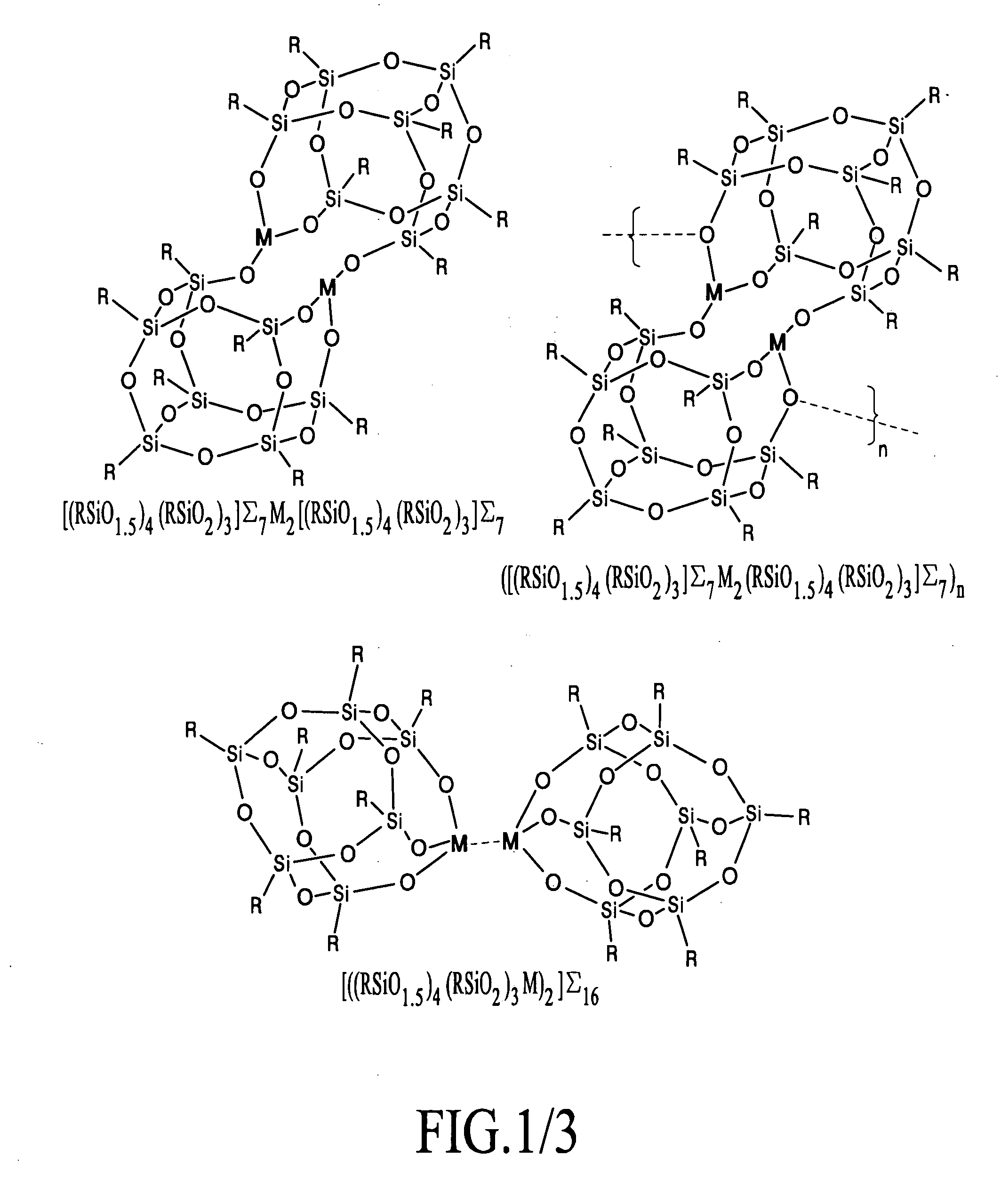Neutron shielding composition
a technology of composition and neutron, applied in the direction of nuclear elements, other chemical processes, liquid/solution decomposition chemical coating, etc., to achieve the effect of high neutron capture cross-section and cost-effectiveness
- Summary
- Abstract
- Description
- Claims
- Application Information
AI Technical Summary
Benefits of technology
Problems solved by technology
Method used
Image
Examples
example 1
Polymeric Form of Shield Material
[0036]Using a twin screw extruder, a silicon containing agent [(iBuSiO1.5)4(iBu(HO)SiO)3]Σ7, a metallized silicon containing agent [(iBuSiO1.5)4(iBuSiO2)3Gd]Σ8, a thermoplastic (EVA=ethylene vinyl acetate) EVA / polyamide (nylon) blend, and gadolinium oxide powder were added using weight loss feeders. The mixture was melt-mixed and a uniform white strand was extruded and pelletized. The pellets were subsequently injection molded into white flat plaques and glue sticks for incorporation into garments.
[0037]Alternately, a suitable formulation can also be achieved using a twin screw extruder, a thermoplastic polymer or polymer blend, and gadolinium oxide powder.
example 2
Incorporation of Shield Material into Garments
[0038]The shield material extruder strand and pellets are suitable for spinning into a fiber for subsequent use in manufacturing woven cloth and garments. Alternately, the white thermoplastic pellets can be applied to garments or woven fabric as a coating via a hot-melt glue gun. Each of these methods is limited in assuring uniform thickness of shield material within a garment.
[0039]A preferred method of providing uniform shielding is to mold plaques of shield material with a precise and uniform thickness. These plaques can then be inserted into pockets within a vest, bib, apron, vest etc. Additional advantages of using plaques in this manner are that it allows for their removal prior to washing of the garment, and it allows for compact folding of the garment for storage and travel. Further the garment can be comfortably positioned while sitting or standing.
example 3
Shield Material as a Protective Lotion
[0040]Using a paddle mixer, a silicon containing agent [(iBuSiO1.5)4(iBu(HO)SiO)3]Σ7, a metallized silicon containing agent [(iBuSiO1.5)4(iBuSiO2)3Gd]Σ8, a commercial moisturizing lotion (Equate®), and gadolinium oxide powder were added and mixed until homogeneous. The white lotion was suitable for direct application to unbroken skin.
[0041]A preferred composition with optical transparency was obtained using a metallized silicon containing agent [(iBuSiO1.5)4(iBuSiO2)3Gd]Σ8 and a commercial moisturizing lotion (Equate®). The resulting white colored lotion was ideal for skin coverage as it formed a smooth transparent layer and dried with a non-greasy, smooth feel.
PUM
| Property | Measurement | Unit |
|---|---|---|
| Composition | aaaaa | aaaaa |
Abstract
Description
Claims
Application Information
 Login to View More
Login to View More - R&D
- Intellectual Property
- Life Sciences
- Materials
- Tech Scout
- Unparalleled Data Quality
- Higher Quality Content
- 60% Fewer Hallucinations
Browse by: Latest US Patents, China's latest patents, Technical Efficacy Thesaurus, Application Domain, Technology Topic, Popular Technical Reports.
© 2025 PatSnap. All rights reserved.Legal|Privacy policy|Modern Slavery Act Transparency Statement|Sitemap|About US| Contact US: help@patsnap.com



